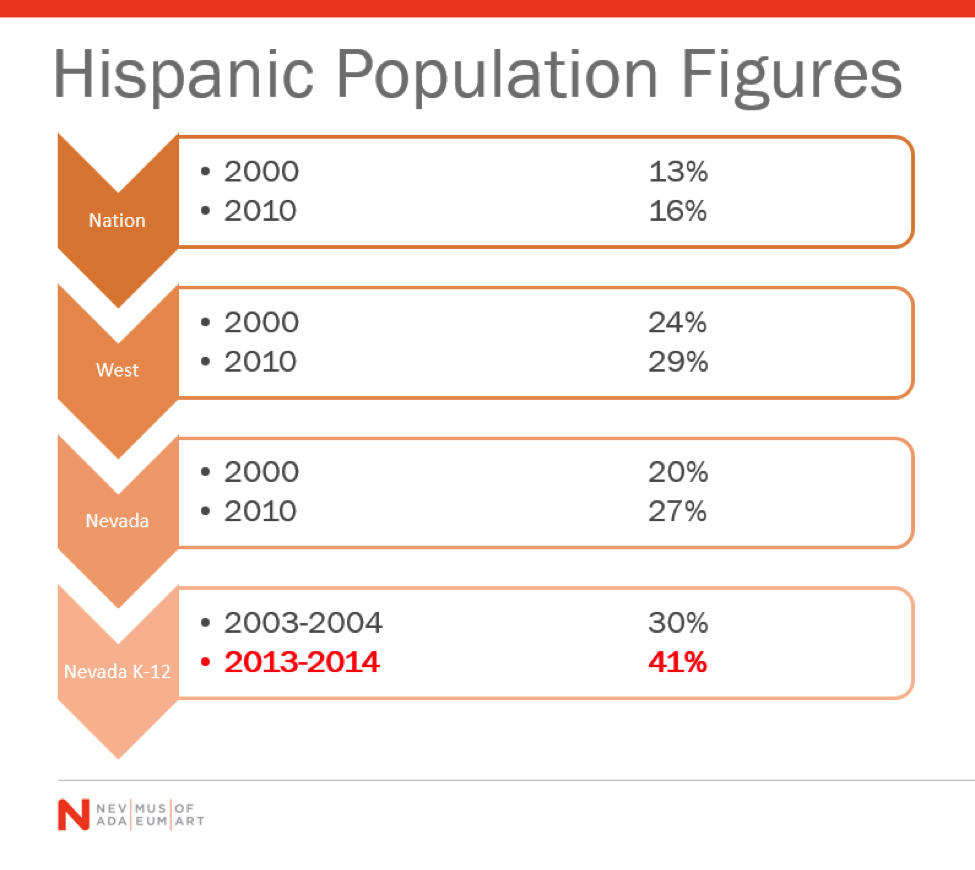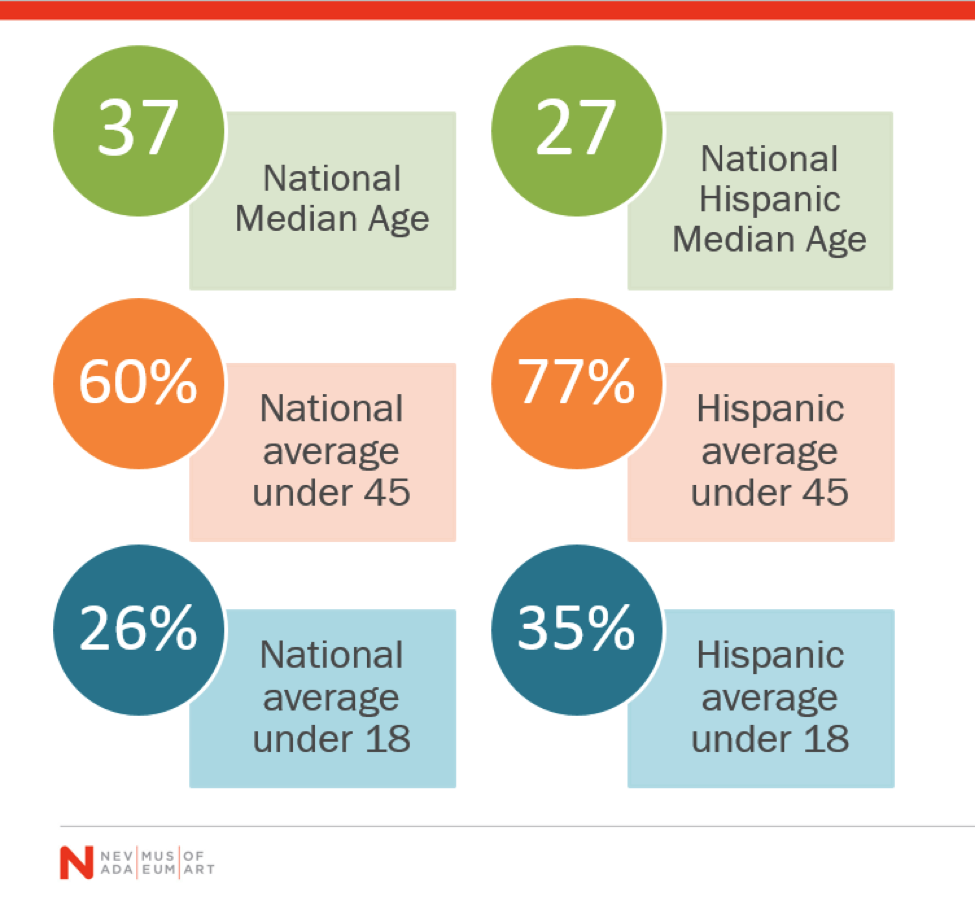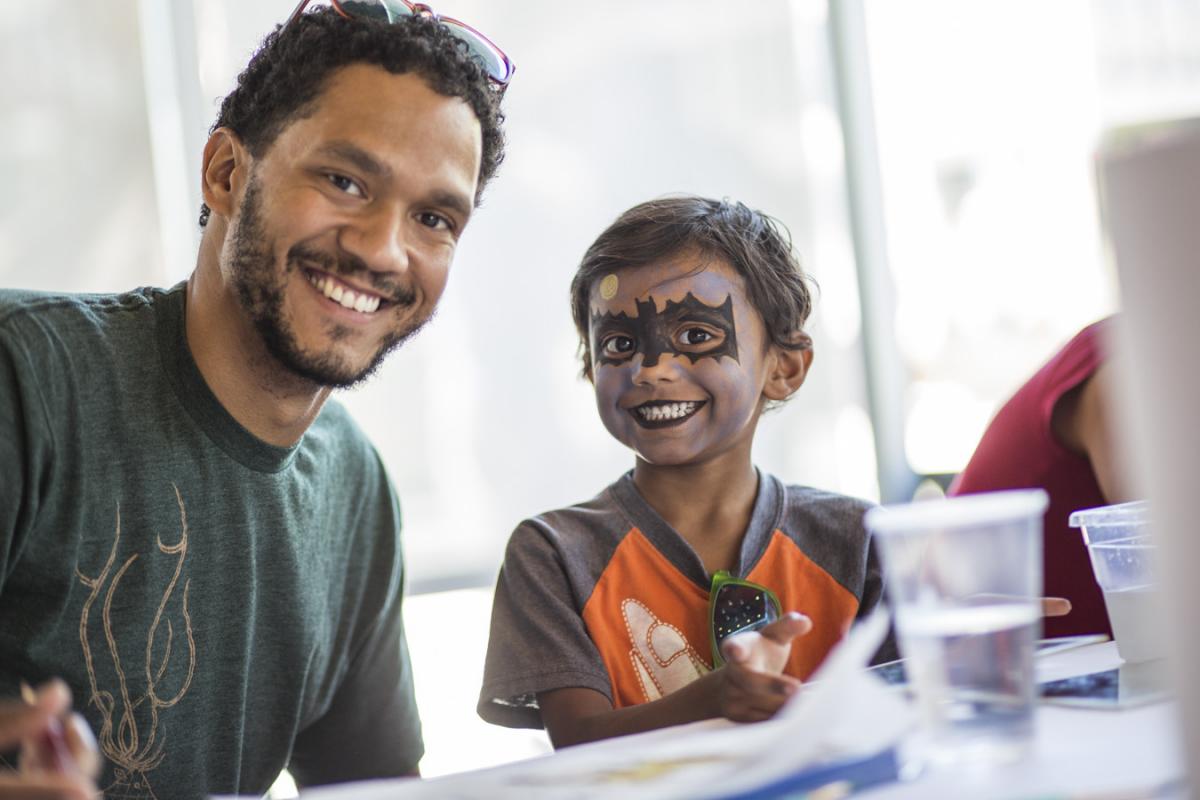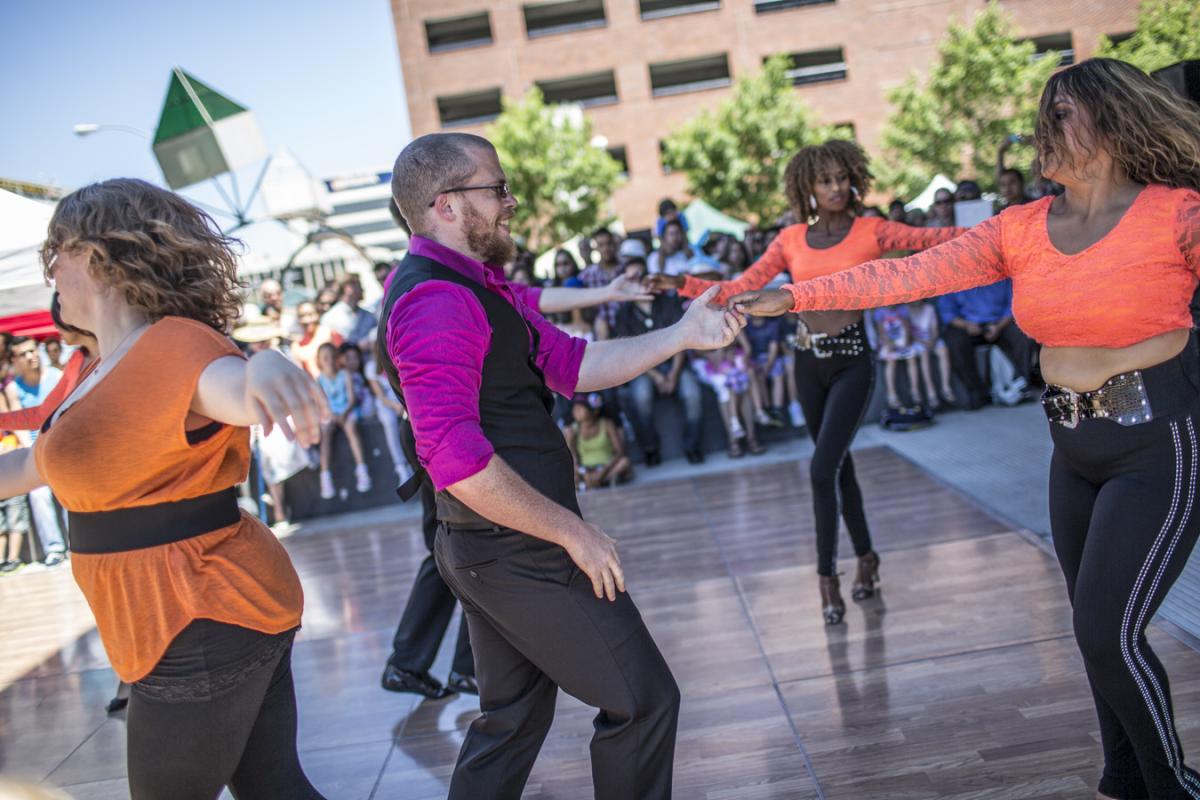By Claire Munoz
 As the nation’s largest ethnic minority, Hispanics represent a vibrant source of audience for museums; yet make up less than 9% of museum visitors according to a 2008 Survey of Public Participation in the Arts conducted by the National Endowment for the Arts. The 2010 United States (U.S.) Census reported the national Hispanic population has grown to 16%. The Western U.S. reflects a population that is 29% Hispanic. Here at the Nevada Museum of Art, we narrowed our focus even further to analyze the state of Nevada’s K-12 students where we found a population that is 41% Hispanic. As we look more closely at the age breakdown of the national Hispanic population, we realized a demographic that is very young, much younger than the national population with 77% of the national Hispanic population under the age of 45 (according to the 2010 Census).
As the nation’s largest ethnic minority, Hispanics represent a vibrant source of audience for museums; yet make up less than 9% of museum visitors according to a 2008 Survey of Public Participation in the Arts conducted by the National Endowment for the Arts. The 2010 United States (U.S.) Census reported the national Hispanic population has grown to 16%. The Western U.S. reflects a population that is 29% Hispanic. Here at the Nevada Museum of Art, we narrowed our focus even further to analyze the state of Nevada’s K-12 students where we found a population that is 41% Hispanic. As we look more closely at the age breakdown of the national Hispanic population, we realized a demographic that is very young, much younger than the national population with 77% of the national Hispanic population under the age of 45 (according to the 2010 Census).

Museums and cultural institutions have a responsibility to respond to their community’s unique audience and engage a growing Hispanic audience by taking a “youthful approach.” Exhibitions, programming and outreach will be best served by thoughtfully dedicating resources towards engagement for K-12 students and their families with rich educational, social and cultural experiences to create an atmosphere of inclusivity and to foster meaningful and sustainable relationships with their growing Hispanic communities and beyond.
Exhibitions
As the central pulse of all museums based in the visual arts, exhibitions tell the story of the museum’s core mission. By including Hispanic and Latino artists in rotating exhibitions, as part of the permanent collection or as part of contextual conversations, a museum will open the door for spaces that reflect the identity of visitors. Bilingual interpretations provide greater opportunities to connect with a wider multi-generational audience and serve as tokens of inclusion.
Youth-Centric Programming
Programming should serve audience of all levels and ages, but by placing a greater emphasis on marketing and core programming for a younger audience, the impact of the programs will be far-reaching and long-lasting. A strong K-12 school tour programs will engage young visitors in what may be their first introduction to a museum. Developing a school tour program which offers return visits coupled with pre and post-tour visits will help make the museum experience richer for the students and educators. Offering free admission monthly or low cost regular programming targeting families while presenting hands-on tactile learning opportunities, multi-cultural performances tied to exhibitions or cultural holidays designed for parents and children will enrich and deepen audience experience. After school art programs, family engagement opportunities, and social events for teens will engage a young audience and will develop early and lasting relationships with your museum.

Photo by Jamie Kingham
Sustainable Partnerships
A strong partnership with your local school districts will be important to capture new and young audiences. Selecting core schools as “Partners in Education” will help create programs that are sustainable and wide reaching. Continuing education opportunities for teachers will embroider your museum into classroom discussions and develop a visual for educators that will trickle down into classroom conversations affecting young students exponentially.
Staffing And Volunteers
In order for a museum to be welcoming and inviting to its Hispanic population, the staff and volunteer core must reflect the cultural diversity of its community. From front desk admissions, the education staff on up to the board of directors, a museum must consider its community and reflect its local constituency accordingly.
In Practice
The Nevada Museum of Art has made an intentional effort to apply each of these components to a directed initiative. Over the past two years, our organization has incorporated bilingual elements into text panels, audio tours, marketing collateral, as well as led bilingual school tours, and created extensive programming to not only connect with our region’s Hispanic and Latino communities, but also to celebrate Latin American art. We have already seen a positive result from these efforts, both in attendance diversity and community goodwill. We encourage other institutions to consider this youthful approach.

Photo by Jamie Kingham
Claire Munoz is the E.L. Cord Museum School Director at the Nevada Museum of Art.








Add new comment